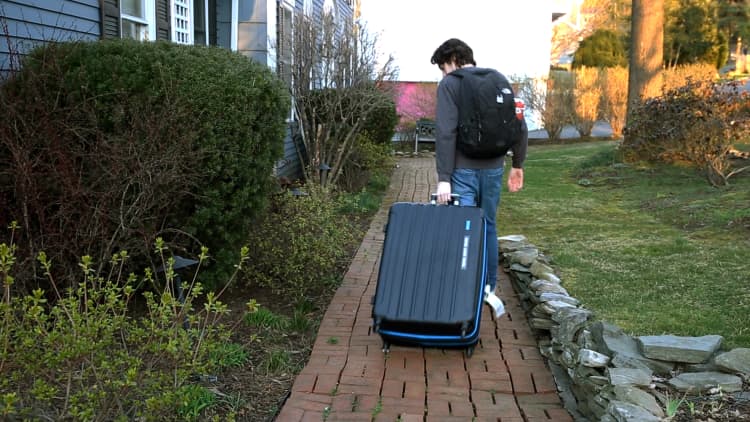Here’s what to do if you suddenly can’t pay for college next year
- For many students and parents, the coronavirus has had a devastating impact on their ability to pay for college.
- Here’s some advice for families, from securing more financial aid to finding additional scholarship money.
If all goes well, Kaylee Klein, 18, will begin her freshman year at Slippery Rock University in western Pennsylvania in the fall.
“She is so excited,” said her mom, Kim Klein.
But now the family must also contend with the coronavirus pandemic, which has dramatically changed their financial circumstances.
“I worry that, financially, it is going to be very difficult,” Klein said of paying for her daughter’s education.

Although Kaylee will receive financial aid from the school, “we still owe $18,000 for the first year,” Klein said. “It’s a lot.”
Kim Klein has multiple sclerosis and is already burdened with hefty medical expenses. Kaylee had planned to work at a camp for children with special needs to help cover her college costs, but the camp has since cancelled the summer session.
If Klein’s husband, Jim, loses his job, the money they have saved for Kaylee’s education will have to go toward their mortgage payments, Klein said.
“Are we going to tell her she will have to wait a year? It is a real fear.”
About 69% of parents and 55% of students entering college in the fall said the coronavirus has impacted their ability to pay for school, according to a recent poll of 6,500-plus high school seniors and their families by NitroCollege.com, a site that helps students and parents navigate college admissions and financial aid.
With many non-essential businesses forced to close, not only are parents across the country suddenly facing extended furloughs or lay-offs, but students like Kaylee have also lost the ability to work to help pay for school.
Anybody in need should be reaching out to their university, said Mayssoun Bydon, the founder and managing partner of The Institute for High Learning, or IHL Prep, an educational consulting firm. “I don’t know if it’s going to be first come, first served but time is of the essence.”
Try to get more financial aid
Currently, a whopping 99% of families said financial aid would be necessary to pay for college and 87% said it was “extremely necessary,” according to a recent survey by The Princeton Review.
However, most students filed the Free Application for Federal Student Aid form, or FAFSA, back in the fall – under much different circumstances.
Now families can amend their FAFSA form or ask the college financial aid office for a “professional judgement review,” Bydon said. Schools are likely receptive to appeals for more aid; they just don’t advertise it, she said.
If there are need-based issues beyond what was noted in the financial aid paperwork, such as increased health-related expenses or the loss of a job, those should be explained to the school and documented, if possible.
“Death, illness and income loss are always grounds to revisit the FAFSA,” said Michael Brown, the managing director of website Nitro College.
The best way to make such a request is to write an appeal letter to the school’s financial aid office, Brown advised.
“It’s very common for things to be reconsidered and, in light of what is happening today, many people’s situations are so different from when they filled this out,” Brown said.
Apply for scholarships
Already, most students and their parents pay only a fraction of the total college tab, according to education lender Sallie Mae.
More than 8 in 10 families tap scholarships and grants to help cover costs, the education lender found. Money that does not have to be paid back is considered the most desirable kind of assistance — and some of this funding is still available.
Although it is late in the game, “try to go after private scholarships and grants,” Bydon said. Free search sites, like the College Board and Tuition Funding Sources, can help.
Robert Franek, The Princeton Review’s editor-in-chief and author of “The Best 385 Colleges,” advises students to look for scholarships locally, particularly from organizations in their community, where the odds of nabbing an award are better than national competitions.
Reconsider your college choices
Thanks to heightened financial concerns, students and families may be more likely to choose local and less-expensive public schools rather than private universities far from home, according to Franek.
As price becomes a growing consideration, 40% of students already said they would attend public college and 26% said they would choose community college, according to a 2019 report by the College Savings Foundation, a Washington-based research group.
After spending the first two years picking up credits at a steep discount at a community college, you can transfer to a four-year, in-state public university and “save a lot of money,” Brown said.
At least 30 states have policies that guarantee that students with an associate degree can then transfer to a four-year school as a junior.
